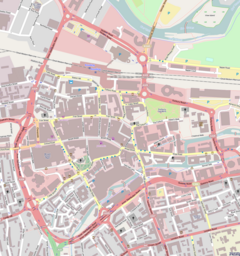
Reading is a town and borough in Berkshire, England. Most of its built-up area lies within the Borough of Reading, although some outer suburbs are parts of neighbouring local authority areas. Located in the Thames Valley at the confluence of the rivers Thames and Kennet, Reading is 40 miles (64 km) east of Swindon, 25 miles (40 km) south of Oxford, 40 miles (64 km) west of London and 16 miles (26 km) north of Basingstoke.

The Royal County of Berkshire, commonly known as simply Berkshire, is a ceremonial county in South East England. It is bordered by Oxfordshire to the north, Buckinghamshire to the north-east, Greater London to the east, Surrey to the south-east, Hampshire to the south, and Wiltshire to the west. Reading is the largest settlement and the county town.

Newbury is a market town in West Berkshire, England, in the valley of the River Kennet. It is 26 miles (42 km) south of Oxford, 25 miles (40 km) north of Winchester, 27 miles (43 km) southeast of Swindon and 20 miles (32 km) west of Reading. It is also where West Berkshire Council is headquartered.
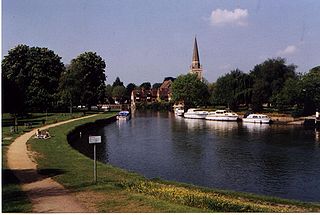
Abingdon-on-Thames, commonly known as Abingdon, is a historic market town and civil parish on the River Thames in the Vale of the White Horse district of Oxfordshire, England. The historic county town of Berkshire, the area was occupied from the early to middle Iron Age and the remains of a late Iron Age and Roman defensive enclosure lies below the town centre. Abingdon Abbey was founded around 676, giving its name to the emerging town. In the 13th and 14th centuries, Abingdon was an agricultural centre with an extensive trade in wool, alongside weaving and the manufacture of clothing. Charters for the holding of markets and fairs were granted by various monarchs, from Edward I to George II.

Kendrick School is a selective girls' grammar school situated in the centre of Reading, Berkshire, UK. In February 2011, Kendrick became an Academy.
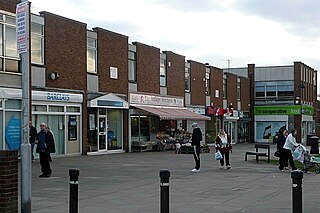
Tilehurst is a suburb of the town of Reading in the county of Berkshire, England. It lies to the west of the centre of Reading; it extends from the River Thames in the north to the A4 road in the south.

John Kendrick was a prosperous English cloth merchant and patron of the towns of Reading and Newbury in Berkshire.

Sonning is a village and civil parish in Berkshire, England, on the River Thames, east of Reading. The village was described by Jerome K. Jerome in his book Three Men in a Boat as "the most fairy-like little nook on the whole river".
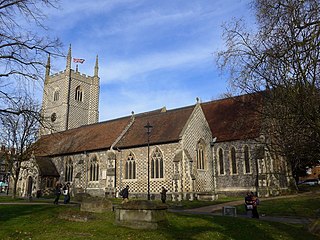
Reading Minster, or the Minster Church of St Mary the Virgin, is the oldest ecclesiastical foundation in the town of Reading, Berkshire, England. Although eclipsed in importance by the later Reading Abbey, Reading Minster regained its status after the destruction of the Abbey and is now an Anglican parish church.
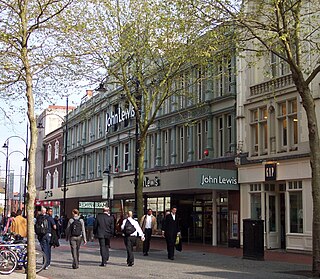
Heelas is a major department store in Reading in the English county of Berkshire. It was known as Heelas until 2001 and that name is still in common usage. The store fronts on to Reading's main pedestrianised shopping street, Broad Street, and backs onto Minster Street and The Oracle shopping centre. The store has belonged to the John Lewis Partnership since 1953.

The Oracle is a large indoor shopping and leisure mall on the banks of the River Kennet in Reading, Berkshire, England. Partly on the site of a 17th-century workhouse of the same name, it was developed and is owned by a joint venture of Hammerson and the Abu Dhabi Investment Authority.

Howden is a market town and civil parish in the East Riding of Yorkshire, England. It lies in the Vale of York to the north of the M62, on the A614 road about 16 miles (26 km) south-east of York and 3 miles (4.8 km) north of Goole, which lies across the River Ouse. It is known for Howden Minster, one of the largest churches in the East Riding.
"Jack of Newbury" or John Winchcombe, also known as John Smallwood was a leading English clothier from Newbury in Berkshire. When Tudor cloth-making was booming, and woollen cloth dominated English exports, John Winchcombe was producing for export on an industrial scale.
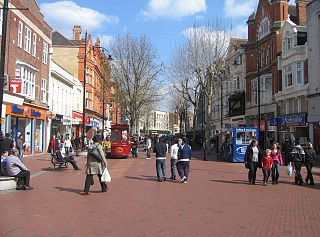
Broad Street is a main pedestrianised thoroughfare and the primary high street in the English town of Reading. The street is situated in the town centre, running for approximately 0.25 miles (0.40 km), from west to east. The western end of the road lies at the crossroads with Oxford Road, West Street and St Mary's Butts. The eastern end continues as King Street after the junction with Minster Street and Butter Market.

High Bridge, sometimes known as Duke Street Bridge, is a bridge across the River Kennet in the town centre of Reading in the English county of Berkshire. It links Duke Street, to its north, and London Street, to its south. High Bridge is the oldest surviving bridge across the Kennet, and is a grade II listed building. It comprises a single arch of vermiculated Portland stone, with a plain keystone of ashlar.

Bridge Street, formerly known as Seven Bridges, is a historic street in the town of Reading in the English county of Berkshire. It took its original name from the seven bridges that carried it over various channels of the River Kennet, and was the earliest crossing place of that river in the town.
Reading is an important commercial centre in Southern England and is often referred to as the commercial capital of the Thames Valley. The town hosts the headquarters of British companies and the UK offices of foreign multinationals, as well as being a major retail centre.
Occupation at the site of Reading may date back to the Roman period, possibly as either a trading port on the River Thames, or as an intersection on the Roman road connecting London with Calleva Atrebatum near Silchester.

The following is a timeline of the history of Reading, the county town of Berkshire in England.
The Sheppard family dominated cloth manufacture in Frome, Somerset, England. They were the first to introduce machinery into the area and in the first quarter of the 19th century were the largest employers.

